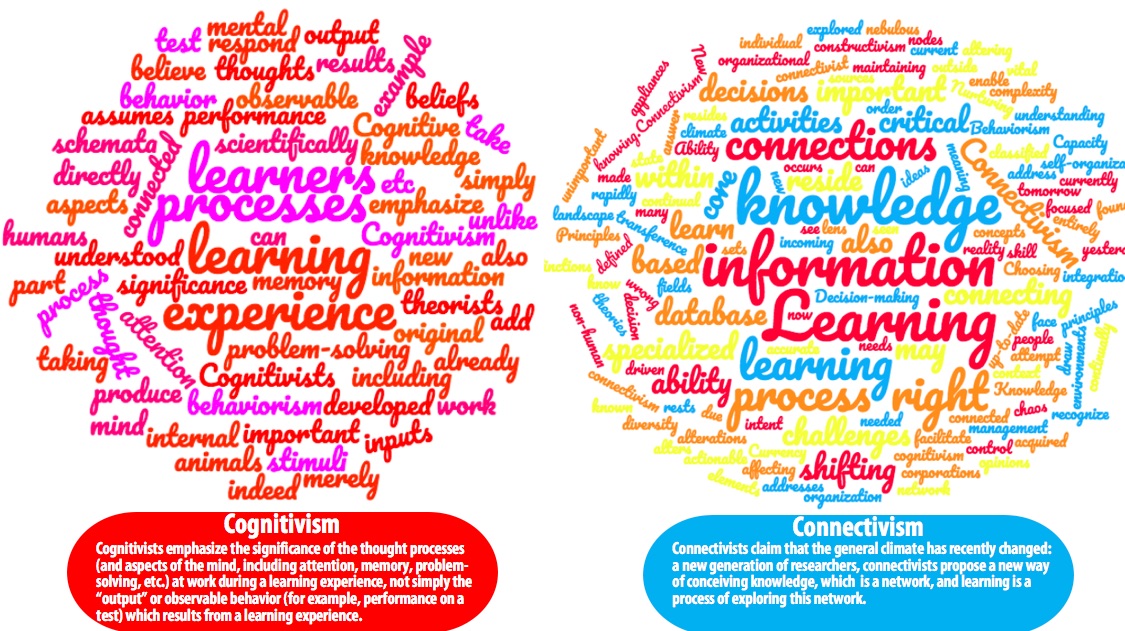
Deliverables
LDT 200x
Cognitivism + Connectivism
LDT100x Instructional Design and Technology: Learning Theories

| Cognitivism
Learning Scenario |
Cognitivism
Learning Scenario Turned into Connectivism Learning
Scenario |
A manager is leading a team of interns and needs to teach them how to set up a social-listening program so the company can monitor what customers are saying about the company's products. In this case, it is assumed that the interns have no previous experience with creating a social-listening program in a business setting. However, by relating this new task to highly similar procedures with which the interns have had more experience, the manager can facilitate a smooth and efficient assimilation of this new procedure into memory. These familiar procedures may include setting up personal social-media sites, making connections on the sites, posting to them, and monitoring comments and mentions. The procedures for such activities may not exactly match those of the social-listening program, but the similarity between the activities allows for the unfamiliar information to be put within a familiar context. Thus processing requirements are reduced and the potential effectiveness of recall cues is increased. |
A manager is leading a
team of interns and needs to teach them how to set up
a social-listening program so the company can monitor
what customers are saying about the company's
products. It is assumed that the interns have no
previous experience with creating a social-listening
program in a business setting. The manager assigns the interns to spend 2 weeks creating a wiki online in which they are expected to post resources, snippets of articles, information about social-listening tools found on the Internet. Given Connectivism's principle that learning is a process of connecting specialized nodes or information sources, team members are expected to interact with each other and collaboratively share and edit resources. Importantly, they are expected to interview others at companies with social-listening programs to gather their ideas and experiences and post them to the wiki. Nurturing and maintaining connections is needed to facilitate continual learning. |
| Both scenarios inspired by a scenario in a chapter by Peggy A. Ertmer and Timothy J. Newby (2018). Behaviorism, Cognitivism, Constructivism. In R. West (Ed.), Foundations of Learning and Instructional Design Technology (1st ed.). Available at https://lidtfoundations.pressbooks.com/. |



